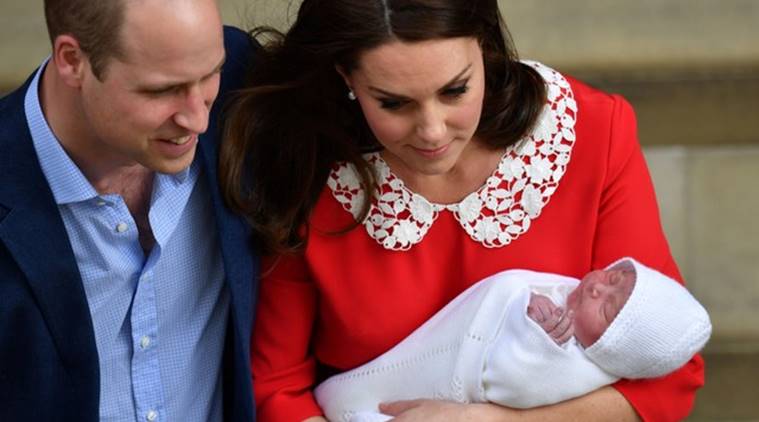 The Duke and the Duchess of Cambridge with the couple’s third baby — the newborn prince in the House of Windsor.
The Duke and the Duchess of Cambridge with the couple’s third baby — the newborn prince in the House of Windsor.
On Monday, April 23, Kate Middleton, Duchess of Cambridge and wife of Duke of Cambridge Prince William, on Monday gave birth to a son, the royal couple’s third child — after son Prince George (2013-) and daughter Princess Charlotte (2015-).
Queen Elizabeth II and her husband Prince Philip Mountbatten have four children, the eldest being Prince Charles, followed by Princess Anne, whose title is the Princess Royal; Prince Andrew, the Duke of York, and Prince Edward, the Earl of Wessex. Significantly, until 2011, the Succession to the Crown Act mandated a system of male preference, giving precedence to the Princes over their sisters in the claim to the throne. However, since that is no longer the case, the new baby boy now comes in fifth-in-line of succession, after elder sister Princess Charlotte. He also bumps up uncle Prince Harry from fifth to the sixth position in the line to the crown.
In 2015, Princess Charlotte became the first royal princess to be born within the direct line of succession (fourth after her grandfather Prince Charles, father Prince William and elder brother George) after her great-aunt Princess Anne (The Princess Royal) and the birth of her younger brother, the new baby prince, would not change this order.
Queen Elizabeth II, who turned 92 this weekend, is Britain’s longest reigning monarch and has been ruling for 65 years. After her, first in order is the 69-year-old Prince Charles, the Prince of Wales, who already holds the record for the longest-serving heir apparent in British history, having been in that position since 1952. He will also be the oldest person to be crowned in British history when he eventually succeeds his mother.
Here is a family tree of the House of Windsor, with numbers indicating the current line of succession to the British throne after the birth of the new prince:
